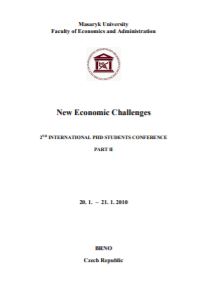Is Perceived Significance Determining Decision Strategy Selection?
Is Perceived Significance Determining Decision Strategy Selection?
Author(s): Axel Sonntag
Subject(s): Economy, Evaluation research, Socio-Economic Research
Published by: Masarykova univerzita nakladatelství
Keywords: Decision Making; Metaheuristics; Strategy Selection Model; Perceived Significance; Classroom Experiment;
Summary/Abstract: “Economics is the science which studies human behavior as a relationship between ends and scarce means which have alternative uses." Focusing on the term human behavior, makes clear what human beings as economic actors actually can do: Decide between alternatives. This emphasizes the role of decision making as a core topic within a huge variety of economic theories and gives an idea why especially this area of research has been and still is paid much attention to. Humans repeatedly have been claimed unable to be rational optimizers because our brains lack the required processing power and storage capacity to do so. Consequently, to meet our every day decision making needs, less effort-demanding strategies are applied. Instead of calculating the optimal solution, simpler and therefore more humane decision rules which make the best out of our cognitive apparatus could be used to infer a problem. Such strategies are also known as heuristics. However, as can be seen from many empirical studies (e.g. [2][3][4]), there is no perfect heuristic which in general results in the most preferable outcome. As there are many fast and frugal methods, whose accuracy and decision outcome dramatically depend on the actual decision environment, the question arises, which strategy should be selected under which circumstances. Procedures used to select a specific heuristic out of a pool of available decision strategies are called metaheuristics. Cost-benefit models, like the effort-accuracy model by Payne, Bettman and Johnson, compare the beneficial accuracy of a decision strategy in finding the best alternative with the effort necessary when applying that strategy. Unfortunately, this theoretically elegant approach refers to an optimization process which is in direct conflict with the preclusion of such procedures due to limited human processing capability. Consequently, a different, nonoptimizing, approach is chosen to select decision strategies in this paper. A new metaheuristic model for decision strategy selection for consumer goods is introduced. It uses the measures as perceived relative costs and relativ holding times of consumer products to trigger the underlying decision effort (metalevel) in selecting an appropriate alternative (choice level).
Book: New Economic Challenges: 2nd International PhD Students Conference. Part II. 20. 1. – 21. 1. 2010
- Page Range: 52-55
- Page Count: 4
- Publication Year: 2010
- Language: English
- Content File-PDF

